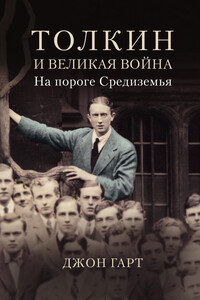Английский язык. Практический курс для решения бизнес-задач - [6]
Many of us have heard slogans that give us a general idea what the company stands for. For General Electric, it is «progress is our most important product». AT&T is proud of its «universal service». DuPont makes «better things for better living through chemistry». Delta Airlines describes its internal climate with the slogan «the Delta family feeling». Similarly, Sears wants to be known for its optimum price/quality ratio, Caterpillar for its 24-hour service, Polaroid for its innovation, Maytag for its reliability, and so on. Indeed, the orientation of these companies, often expressed in slogans, contributes to the successful conduct of their business. But slogans must be translated into managerial behavior.
Managers, and especially top executives, create the climate for their business. Their values influence the direction of the company. Values are a fairly permanent belief about what is appropriate and what is not that guides the actions and behavior of employees in fulfilling the organization’s aims. Values form an ideology that permeates everyday decisions and behavior.
In many successful companies, corporate leaders serve as role models, set the standards for performance, motivate employees, make the company special and are a symbol for the external environment. It was Edwin Land, the founder of Polaroid, who created a favorable organizational environment for R&D and innovation. It was Jim Treybig of Tandem in the Silicon Valley who emphasized that every person is a human being and deserves to be treated accordingly. It was William Proctor of Proctor&Gamble who ran the company with the slogan, «Do what is right». It was Theodore Vail of AT&T who addressed the needs of customers by focusing on service.
In a free-market economy businesses cannot exist without the goodwill of their customers. Yet in certain companies customers are seen as merely interrupting work. Clearly, the long-term success of such a company may be in jeopardy. By contrast, in companies with a strong customer-oriented culture, employees in all departments (not only those that are specially set up to handle customer complaints) listen carefully to the needs of the customers. After all, they are the reasons the company exists. In such companies, measurable customer-satisfaction objectives are set and frequently used for evaluating customer reactions. This may be done through formal surveys or, at times, top managers may contact key customers personally. When Ross Perot, the Texas billionaire who sold his computer company to General Motors, was on the GM board, he answered all customer complaints about cars, rather than sending form letters.
Focus on quality is one of the most important aspects of corporate culture. Too often we hear that what really counts is the bottom line. Of course, businesses can only exist in the long run by generating profit. Unfortunately, profit orientation too often means profit in the short run with little consideration for the long-term health of the enterprise. In the past some U.S. automakers neglected quality because it appeared cheaper to pay for warranty claims than to build quality into the products. The loss of future sales was often not recognized as a cost. In contrast, many Japanese car manufacturers have made quality the basis for long-term profit.
People respond to those things for which they get rewarded. Few rewards are usually given for quality. In a typical company, CEOs get rewarded for profit improvement – seldom for superior products and services. But quality pays in the long run as Japanese car, camera and electronics manufacturers have shown. In Japan, responsibility for quality and productivity is placed at the top. This, in turn, creates a culture that says: Our organization is fanatical about both productivity and quality.
Managers in effective organizations are characterized by action. This can only be done by top management’s commitment to breaking down rigid organization structures. It may begin with some symbolic actions such as eliminating reserved parking spaces for top-echelon managers. After all, is it not equally important that the first-line supervisor be on time to start the assembly line rather than circling the parking lot to find a space to park? Companies with a strong people-oriented culture believe that the dignity of all people is paramount. Whether a manager or a worker, all contribute toward a common goal; all have basic needs for being appreciated as persons; all have the desire to feel competent in carrying out their task, whatever it is.
While a clear mission statement and goals have the potential to motivate organizational members to excellence, the means to achieve these ends must never be compromised. Actions and behavior must be guided by adherence to company policy, must never violate any laws, and above all, must not be unethical. In ethical companies, integrity is the norm, not the exception. Ethics may be institutionalized through 1) company policy or a code of ethics, 2) a formally appointed ethics committee, and 3) the teaching of ethics in management development programs.

«Надо уезжать – но куда? Надо оставаться – но где найти место?» Мировые катаклизмы последних лет сформировали у многих из нас чувство реальной и трансцендентальной бездомности и заставили переосмыслить наше отношение к пространству и географии. Книга Станислава Снытко «История прозы в описаниях Земли» – художественное исследование новых временных и пространственных условий, хроника изоляции и одновременно попытка приоткрыть дверь в замкнутое сознание. Пристанищем одиночки, утратившего чувство дома, здесь становятся литература и история: он странствует через кроличьи норы в самой их ткани и примеряет на себя самый разный опыт.

В сборнике представлены теоретические сведения о семантической структуре слова, о структуре текста, о типах речи, подобраны упражнения для анализа текста, также образцы рецензий на фрагменты рассказов из КИМов ЕГЭ.

Книга Дж. Гарта «Толкин и Великая война» вдохновлена давней любовью автора к произведениям Дж. Р. Р. Толкина в сочетании с интересом к Первой мировой войне. Показывая становление Толкина как писателя и мифотворца, Гарт воспроизводит события исторической битвы на Сомме: кровопролитные сражения и жестокую повседневность войны, жертвой которой стало поколение Толкина и его ближайшие друзья – вдохновенные талантливые интеллектуалы, мечтавшие изменить мир. Автор использовал материалы из неизданных личных архивов, а также послужной список Толкина и другие уникальные документы военного времени.

В новой книге известного писателя Елены Первушиной на конкретных примерах показано, как развивался наш язык на протяжении XVIII, XIX и XX веков и какие изменения происходят в нем прямо сейчас. Являются ли эти изменения критическими? Приведут ли они к гибели русского языка? Автор попытается ответить на эти вопросы или по крайней мере дать читателям материал для размышлений, чтобы каждый смог найти собственный ответ.

Предлагаемое издание – учебник нового, современного типа, базирующийся на последних разработках методики обучения языкам, максимально отвечающий потребностям современного общества.Его основная цель – научить свободно и правильно говорить на английском языке, понимать разговорную речь и ее нюансы.Отличительными чертами учебника являются:· коммуникативная методика подачи и закрепления материала;· перевод на английский язык лексики и диалогов учебника носителем языка;· грамматические комментарии, написанные на основе сопоставительного изучения языков и имеющие также коммуникативную направленность.Учебник предназначен для студентов, преподавателей, а также для всех, кто хочет научиться свободно общаться на английском языке.

Доклад С.Логинова был прочитан на заседании Семинара 13 декабря 1999 года, посвященном теме «Институт редакторов в современном литературном процессе»).От автора: статья написана на основе фактов, все приведённые имена и фамилии подлинные. Случайных оскорблений здесь нет.

Впервые в отечественной учебной литературе рассматриваются процессы, связанные с управлением знаниями, а также особенности экономики, основанной на знаниях. Раскрываются методы выявления, сохранения и эффективного использования знаний, дается классификация знаний, анализируются их экономические свойства.Подробно освещаются такие темы, как интеллектуальный капитал организации; организационная культура, ориентированная на обмен знаниями; информационный и коммуникационный менеджмент; формирование обучающейся организации.Главы учебника дополнены практическими кейсами, которые отражают картину современной практики управления знаниями как за рубежом, так и в нашей стране.Для слушателей программ МВА, преподавателей, аспирантов, студентов экономических специальностей, а также для тех, кого интересуют проблемы современного бизнеса и развития экономики, основанной на знаниях.Серия «Полный курс МВА» подготовлена издательством «Эксмо» совместно с Московской международной высшей школой бизнеса «МИРБИС» (Институт)